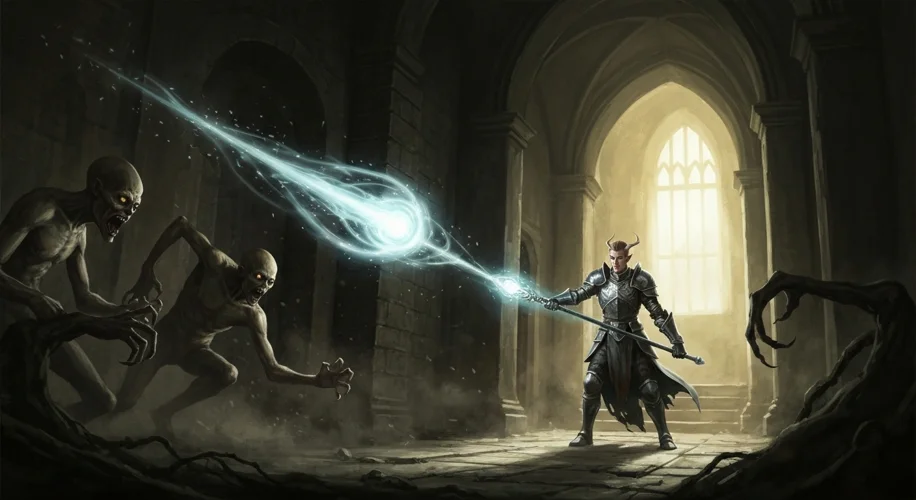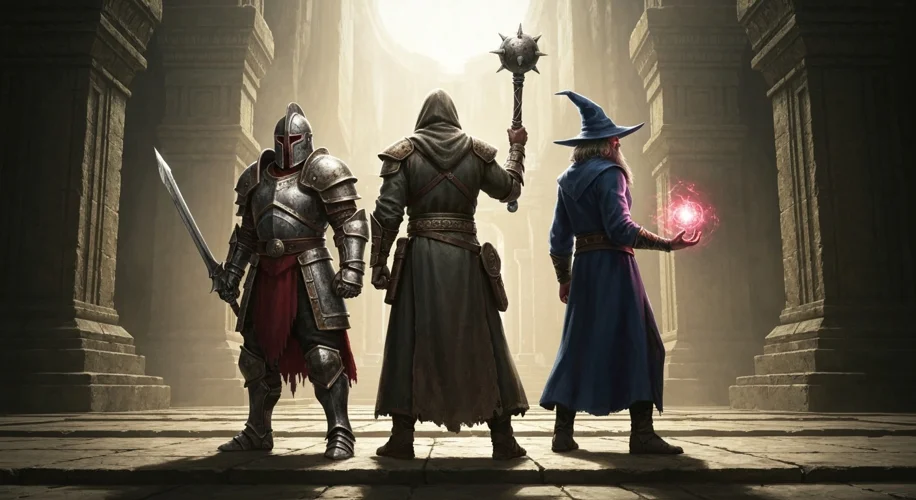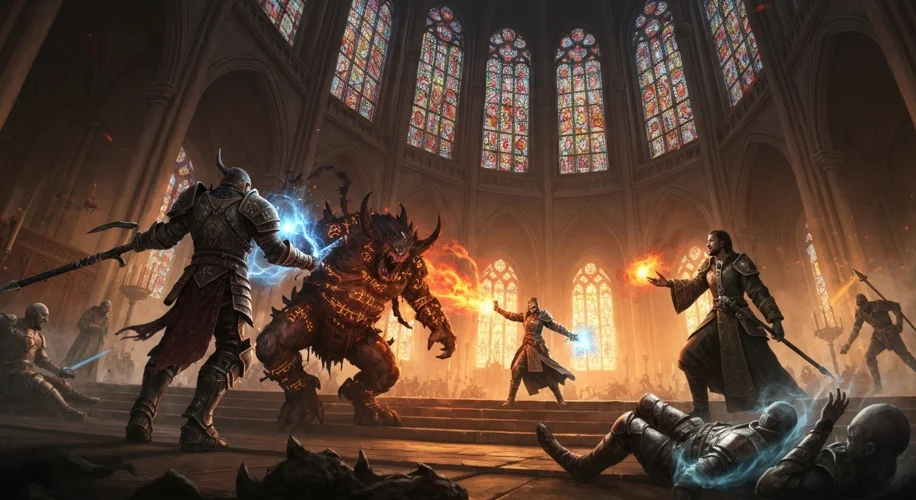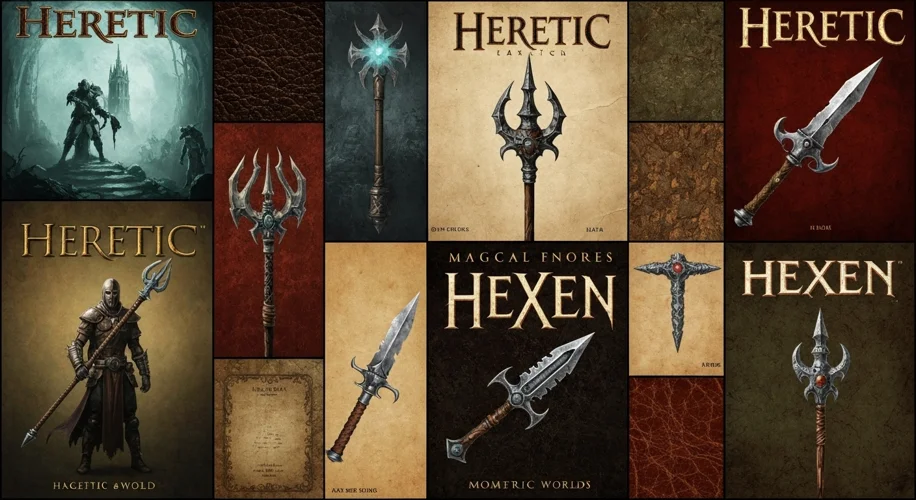The mid-1990s was a golden era for first-person shooters. Amidst the demonic hordes of Doom and the alien invasions of Duke Nukem 3D, a different kind of darkness began to coalesce. Id Software, the titans who had already redefined the genre, ventured into realms of magic, sorcery, and medieval dread with their groundbreaking titles, Heretic and Hexen. These weren’t just Doom clones with a new coat of paint; they were ambitious expansions of the FPS formula, injecting rich fantasy lore and innovative gameplay mechanics that left an indelible mark on the gaming landscape.
Before we delve into the shadowy depths of these games, it’s crucial to understand the cultural and technological climate that birthed them. The early to mid-90s saw the PC gaming scene explode. The burgeoning power of 3D graphics cards, coupled with the widespread adoption of CD-ROM technology, allowed for richer, more immersive experiences than ever before. Fantasy literature and role-playing games like Dungeons & Dragons were immensely popular, creating a receptive audience for games that could translate these beloved tropes into interactive digital worlds.
Heretic, released in 1994, was a pivotal moment. Developed by Raven Software and published by Id Software, it used a modified version of the Doom engine. This familiar foundation allowed players to instantly grasp the core gameplay: move, shoot, explore. However, Heretic immediately distinguished itself with its setting. Instead of a Martian research facility overrun by demons, players were thrust into the war-torn lands of the Serpent Riders. You weren’t a space marine; you were a nameless Elf, the last hope against an unholy trinity of evil. This shift in perspective, from sci-fi grit to dark fantasy, was a bold move.

The arsenal in Heretic was a testament to its fantasy roots. Gone were the chainguns and plasma rifles. In their place, players wielded items like the Staff of Sorcery, the Gauntlets of the Necromancer, and the iconic Dragon Claw. Each weapon had a distinct feel and purpose, encouraging strategic use rather than just relentless firing. Furthermore, Heretic introduced the concept of inventory items, allowing players to collect and use magical artifacts like potions of invisibility or elixirs of life, adding a layer of strategic depth absent in its predecessor.
The world of Heretic felt ancient and weathered. Its medieval architecture, Gothic influences, and unsettling enemy designs – from the spectral wraiths to the hulking Golems – created an atmosphere of pervasive dread. The sound design amplified this, with eerie ambient noises and the guttural roars of monstrous foes.
Building on the success of Heretic, Raven Software, again with Id Software’s backing, unleashed Hexen: Beyond Heretic in 1995. This sequel doubled down on the ambition, taking the fantasy FPS genre into even more complex territory. Hexen retained the dark fantasy setting but introduced several radical departures. Perhaps the most significant was the introduction of distinct character classes: the Fighter, the Cleric, and the Mage. Each class possessed unique abilities, starting weapons, and a different approach to combat and exploration. The Fighter was the brawler, the Cleric could heal and unleash holy wrath, and the Mage wielded devastating magical spells.

Hexen also evolved the level design significantly. Gone were the linear corridors of Heretic. Instead, players navigated sprawling, interconnected hub worlds, often requiring them to collect keys or complete objectives in one area to unlock progress in another. This quest-like structure borrowed heavily from RPGs, making Hexen feel more like a dungeon crawler than a traditional shooter. The lore deepened too, with players delving into the origins of the Serpent Riders and the quest to defeat their leader, Korax.
The gameplay in Hexen was more demanding. With multiple character classes and more intricate level design, players had to adapt their strategies. The introduction of melee combat for the Fighter, alongside a variety of magical weapons for all classes, provided a rich combat system. The game’s difficulty curve was steep, rewarding those who mastered each character’s unique strengths and explored every hidden alcove.

The impact of Heretic and Hexen cannot be overstated. They proved that the FPS genre could transcend its sci-fi roots and embrace other thematic elements with compelling results. They demonstrated the power of modifying established engines to create entirely new experiences and influenced countless games that followed, paving the way for more narrative-driven and thematically diverse shooters. While Doom provided the blueprint, Heretic and Hexen built elaborate, dark castles upon it, filled with magic, mystery, and a terrifying sense of adventure.
In retrospect, these games represent a fascinating intersection of technological advancement and creative ambition. They captured the imagination of players with their unique blend of visceral action and atmospheric fantasy, offering a darker, more magical alternative to the prevailing sci-fi narratives of the era. For those who experienced them firsthand, Heretic and Hexen remain potent reminders of a time when the boundaries of the first-person shooter were being boldly redrawn, one pixelated spell and demonic grunt at a time.

